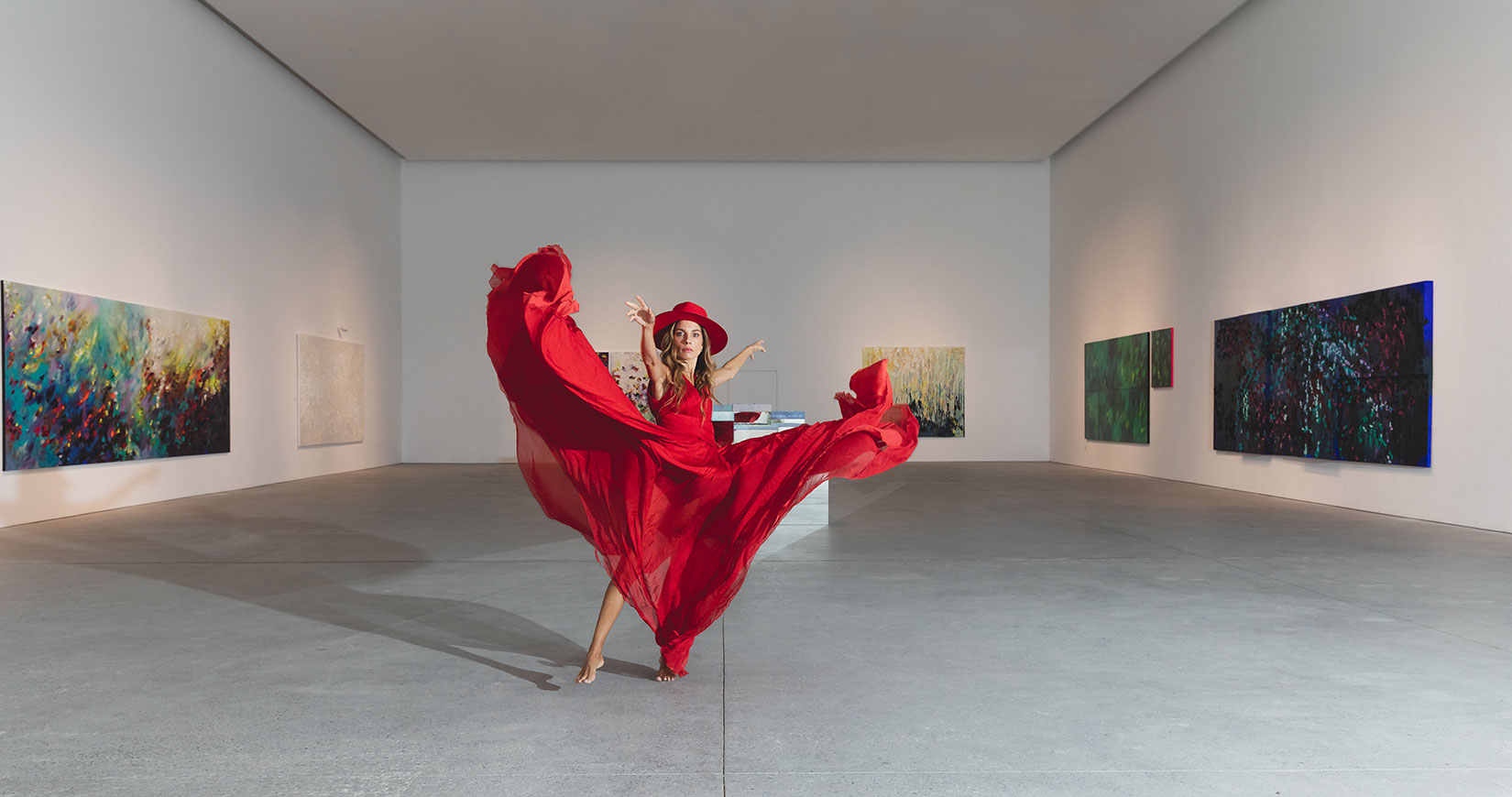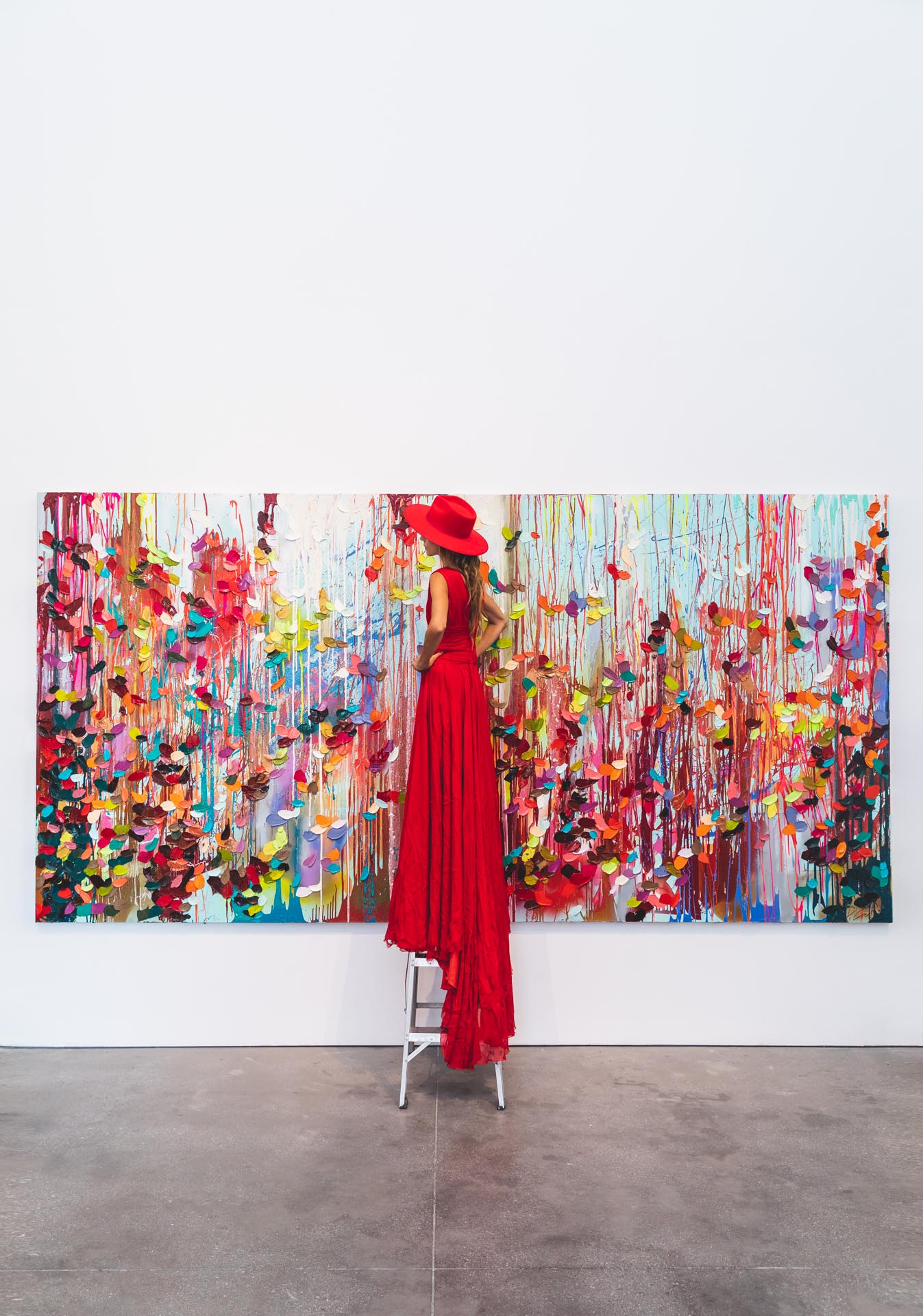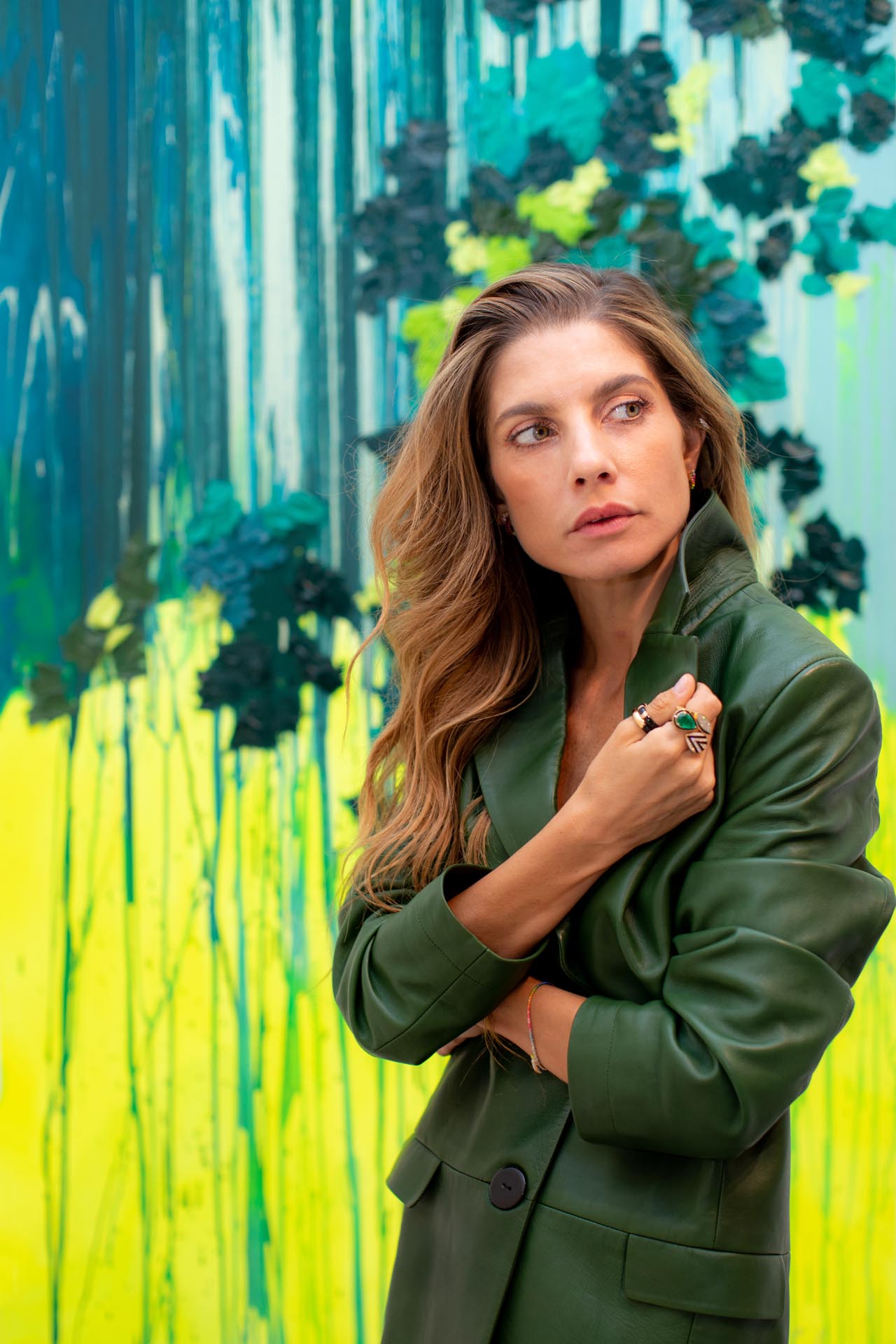Copyright © 2025 Motivate Media Group. All rights reserved.
Ana D’ Castro’s first solo show at Leila Heller Gallery is an enchanted garden of colour
The Portuguese artist-cum-architect's exhibition showcases her relationship with colour and space

“From my father’s side, my grandfather was an artist and from my mother’s side, the family business [was in the manufacturing of] industrial paints. [So, from] an early age my fascination with paints, pigments and synthetic components was always there,” begins Ana D’Castro, whose first exhibition, ‘The Enchanted Garden’, is currently on show at the Leila Heller Gallery in Dubai’s Alserkal Avenue.
“I have always loved colour, and I remember since an early age being fascinated with the vibrancy of each gradient and how you mix them to create other colours. It’s a very precise method where you sit in a laboratory and measure with great precision how many milligrams of each dye can be mixed to create a determinate tone,” she explains.

‘Enchanted Garden’ is composed of a series of abstract paintings in which colour is the protagonist and acts as a tool for expressing emotion using a juxtaposition of different pigments and layers; some lying flat, while others – thick flickers of paint like flower petals – seem to be almost ready to escape the canvas.
The artworks also offer a glimpse into how light interacts with colour and the surrounding environment during different times of the day through the artist’s layered approach. Initially, we see the first layer – the faded horizon where colours bleed into one another – and then the second, where richer patches of oil paint create a more heavily textured and tri-dimensional effect. The ‘petal’ effects, lastly, flow across the canvas as if flying in an invisible wind. All in all, D’Castro’s ‘Enchanted Garden’ is a study of colour in itself, where paintings present an explosion of chromatic emotion, composed into a series of either multi- or monochromatic canvases.

“Through my practice, my aim is to manipulate colour and the subtle variations of the same gradient, in order to create volume, depth and perspective within the canvas. While composing the movement of the piece, I carefully study how colour will add or subtract light and shadow into the ensemble. Colour plays a major role in my artworks, and I am constantly looking for the exact tone, the role it plays by allocating in a specific place, and how instantly this act either dilutes or enhances the volumetric composition,” the artist shares.
The exhibition itself is set up using a specific foundation concept created by the artist, where a modular system forms the base of all canvases, with the prime module being two metres by two metres. This module is then multiplied into triptychs and diptychs or subdivided into smaller modules of 1m x 1m and 0.5m x 0.5m, just like a structural metric grid that is fundamental to any architectural foundation.
Photography by Joachim Guay
The Latest
Inside The Charleston
A tribute to Galle Fort’s complex heritage, The Charleston blends Art Deco elegance with Sri Lankan artistry and Bawa-infused modernism
Design Take: Buddha Bar
We unveil the story behind the iconic design of the much-loved Buddha Bar in Grosvenor House.
A Layered Narrative
An Edwardian home in London becomes a serene gallery of culture, craft and contemporary design
A Brand Symphony
Kader Mithani, CEO of Casamia, and Gian Luca Gessi, CEO of Gessi, reflect on the partnership between the two brands
The Art of Wellness
Kintsugi in Abu Dhabi, situated in a seven-storey villa, offers the ultimate zen retreat
Design Take: Inside the Royal Suite at Jumeirah Al Naseem
With sweeping views of the ocean and Burj Al Arab, this two bedroom royal suite offers a lush stay.
Elevated Living
Designed by La Bottega Interiors, this penthouse at the Delano Dubai echoes soft minimalism
Quiet Luxury
Studio SuCo transforms a villa in Dubailand into a refined home
Contrasting Textures
Located in Al Barari and designed by BONE Studio, this home provides both openness and intimacy through the unique use of materials
Stillness, Form and Function
Yasmin Farahmandy of Y Design Interior has designed a home for a creative from the film industry
From Private to Public
How ELE Interior is reshaping hospitality and commercial spaces around the world – while staying unmistakably itself
A collaborative design journey
A Life By Design (ALBD) Group and Condor Developers have collaborated on some standout spaces in Dubai
















